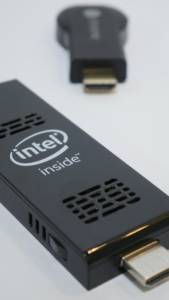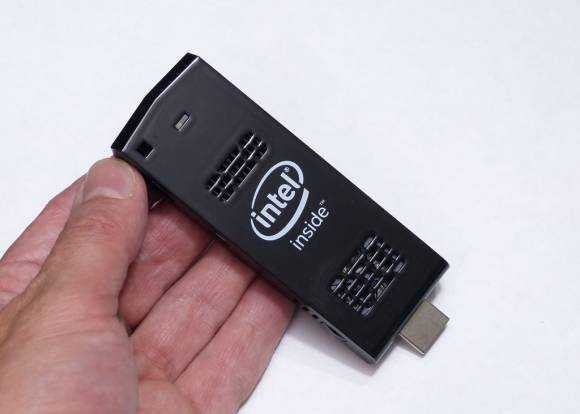The Xbox Dongle, a Chromecast / FireTV-like streaming and gaming device could help Windows 10 in the consumer space and might be a critical last-chance for Microsoft to keep Windows relevant for consumers. Windows Mobile was the potential low-cost, high volume strategy that could have created a stable development economy but now it’s gone there isn’t much else left – apart from the dongle.
I mentioned the LumiaBook a few days ago. It’s one way that Microsoft could create a low cost platform that could both improve the Windows 10 Store economy and fight the challenge of Chromebooks and Android aps. In a podcast by The Digital Lifestyle yesterday evening (May 31) I was interested to hear a discussion about an Xbox Dongle. I’m a fan of Windows 10 Casting, DIAL and Miracast and if Microsoft can promote it well enough then there’s no reason that Windows 10 Mobile, or even a low-end Windows 10 x86 build, couldn’t be re-purposed as an Xbox dongle.
An Xbox dongle (or a Lumia dongle, but I think Xbox is the better branding) would serve these purposes.
1 – Be a platform on which Universal Windows Platform (UWP) games could be promoted. UWP means comparability across PC, Phone, Xbox and HoloLens.
2 – Be a very low cost way to distribute a large number of Windows 10 ‘installs’. Microsoft says it has 300 million Windows 10 PCs in use now but there’s still along way to go to hit the promised 1 billion and if they can’t ship millions of cheap Lumia phones, how can they do it? A $50 Xbox dongle might be the best option.
3 – Give software vendors confidence that they can develop for ‘consumer’ Windows.
Related: Casting improved in Windows 10
Related: DIAL protocol tested with Windows 10.
An Xbox dongle isn’t going to be easy. A lot of graphics power will be required to support some of the more advanced Windows 10 games, Xbox streaming and a 1080p resolution which could mean using a high-end and expensive platform. The current Intel Compute Stick (above) with Windows 10 is interesting, but not perfect for what Microsoft need. I tested a Core m5 based convertible yesterday and had to knock the graphics settings on Asphalt 8 down to get the smoothest 1080p performance. The latest ARM-architecture graphics-focused platforms aren’t cheap either. Nvidia isn’t in that game any more [they announced this at Computex over the last few days.] so just how cheaply can Microsoft make an Xbox dongle? Anything over $50 could be a problem if mass-sales and mass Windows 10 deployment is the target. One answer could be to produce an entertainment version and a gaming version with the latter having some form of simple VR experience, perhaps. Cortana for Home could also be part of the package.
The second problem is the app-gap and the required app upgrades. While Netflix, TuneIn and other popular streaming apps are available there’s a big problem with YouTube and other services. The existing apps also need to be updated to support Windows 10 DIAL (a Chromecast-like process of remote control) so that they can be controlled from a smartphone or a PC. It would be a mistake to rely on Miracast or DLNA for any PC-based control and having both a remote control app, hardware remote control and the ability to ‘Cast’ from a PC to the Xbox dongle would be combining the best of Chromecast and Amazon Fire TV. Getting ISVs to update apps is going to be incredibly difficult unless Microsoft can guarantee that millions of the dongles will be sold. I note that Google only has 20 million Chromecasts in circulation. That’s a lot, but not enough to tempt developers to make interesting new apps. Multi-room audio and home automation might have to be part of the package if Microsoft want to make a compelling product.
An Xbox Dongle will be difficult, but maybe the only chance Microsoft has to stabilize and eventually grow the economics of the Universal Windows Platform for developers. Xbox gaming is a Microsoft strong-point though and to lever this into a dongle could be the best option they have, if they really want to rescue ‘consumer’ Windows 10.













An Xbox Dongle does not sound like a good idea. The problem is it needs (screen + power + controller) to work, and where you find those, you probably already have a PC nearby, maybe an Xbox already wired up. Also the dongle hardware is not powerful enough, it’ll just tarnish the Xbox brand.
But I agree with you, Xbox is a lifeline for Microsoft to stay close to consumers.
The lack of apps in the Windows store can actually be a good thing. Now that MS has mostly withdrew from the Smartphone Market, the Windows Store can be purged and completely re-positioned!
The Windows Store should not be about “Candy Crush”-grade games, it should be selling “Crysis”-grade games front and center! MS can start by putting old “Halo” / “Age of Empires” / “Flight Simulator” (Remember things called “Flight-sticks”!?) games on the Windows store for cheap, then make deals with Game publishers to put old and new PC games on the Windows Store instead of Steam or GOG. At this stage, profit per sale is not important, nor is it important to have all apps “universal”. The important thing right now is simply to build up user base & ‘installs’, and stop people comparing Windows Store with Google Play/iOS App store -they serve different devices.
Once you have enough ‘installs’ and user base, the usual “universal” apps will naturally come back, begging to be included.
???????
I see the path to success very differently. I think its less likely a Xbox branded dongle is packing cpu/gpu/ram than one that accesses a PC/MAC to run and stream app content. Of course a local Xbox can serve this function to but I doubt you’d be able to get a full desktop experience from Xbox if thats what you are after. But I do agree there should be another value proposition such as multiroom audio/cortana access.
??????????????????????
?????
????????????????????????
????????????????????????
????????????????????????
???????????????
http://www.1321529191.3i4.com.cn/
??????????????????????
??????????????
??????????????
http://www.loveuv.com/l/NDGBXQ
????5000???
?????……